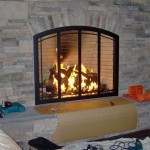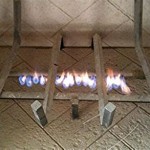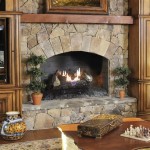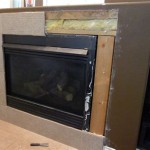How To Attach a Wood Mantel to a Brick Fireplace Wall Mount
Attaching a wood mantel to a brick fireplace is a common home improvement project that can significantly enhance the aesthetic appeal of a living space. This process, while seemingly straightforward, requires careful planning, precise execution, and the appropriate tools and materials to ensure a secure and visually pleasing outcome. This article provides a comprehensive guide on how to attach a wood mantel to a brick fireplace wall mount, covering essential preparatory steps, installation techniques, and safety considerations.
Before embarking on this project, it is important to assess the existing fireplace structure, the type of mantel being installed, and the specific mounting hardware available. Different brick types, mantel designs, and mounting systems will necessitate variations in the installation procedure. Understanding these factors will allow for a tailored approach that maximizes stability and minimizes the risk of damage to both the mantel and the fireplace.
The selection of the appropriate mounting system is crucial for the success of this project. Several options are available, including brick anchors, mounting brackets, and adhesive solutions. The choice depends largely on the weight of the mantel, the type of brick, and the desired level of permanence. Heavier mantels generally require mechanical anchors that provide a robust and reliable connection, while lighter mantels may be suitable for adhesive mounting techniques.
Key Considerations Before Installation
Prior to commencing the installation process, there are several key considerations that need to be addressed. These include assessing the brick surface, selecting the appropriate mounting hardware, and preparing the mantel itself. Failure to adequately address these aspects can lead to instability, aesthetic imperfections, or even structural damage to the fireplace.
The condition of the brick surface is paramount. Examine the brick for cracks, crumbling, or loose areas. If any of these issues are present, they need to be addressed before proceeding. Loose or damaged bricks should be replaced or repaired using appropriate masonry techniques. Neglecting this step can compromise the integrity of the mounting system and lead to a weakened connection. Similarly, ensure the mortar joints are in good condition, as they will be the primary points of contact for many mounting solutions.
Selecting the right mounting hardware is equally important. Brick anchors, specifically designed for masonry applications, are generally the preferred choice for heavier mantels. These anchors utilize expansion mechanisms to grip the brick securely. Different types of brick anchors are available, including sleeve anchors, wedge anchors, and concrete screws. The appropriate type will depend on the specific brick type and the weight of the mantel. Smaller mantels might be accommodated with specialized construction adhesives designed for masonry surfaces. Thoroughly research the load-bearing capacity of any adhesive before relying on it for a significant weight.
The mantel itself should be properly prepared before installation. This may involve sanding, staining, or sealing the wood to achieve the desired finish. It is also important to ensure the back of the mantel is flat and free of any obstructions that could interfere with the mounting process. If the mantel has a hollow core, consider reinforcing it with internal supports to prevent sagging or cracking, especially if it will be supporting any additional weight.
Finally, safety should always be a top priority. Wear appropriate safety glasses and gloves to protect against dust and debris. When drilling into brick, use a dust mask to avoid inhaling harmful particles. If using power tools, ensure they are in good working order and that you are familiar with their safe operation. Consider having a second person assist with lifting and positioning the mantel, especially if it is heavy or unwieldy.
Step-by-Step Installation Guide Using Brick Anchors
This section outlines a detailed, step-by-step guide for attaching a wood mantel to a brick fireplace using brick anchors. This method is suitable for mantels of moderate to heavy weight and offers a robust and reliable mounting solution.
Step 1: Precise Measurement and Marking. Carefully measure the desired location for the mantel on the brick fireplace. Use a level to ensure the mantel will be perfectly horizontal. Mark the position of the mounting holes on the brick, taking into account the spacing of the anchors and the dimensions of the mantel. Accurately transferring measurements from the mantel to the fireplace is crucial for a seamless installation.
Step 2: Drilling Pilot Holes. Using a hammer drill and a masonry drill bit that matches the diameter of the brick anchors, carefully drill pilot holes at the marked locations. Ensure the drill bit is designed for use with brick and that the hammer drill is set to the appropriate setting for masonry drilling. Drill the holes to the depth specified by the anchor manufacturer. Keeping the drill perpendicular to the brick surface is essential for creating straight and accurate holes.
Step 3: Inserting Brick Anchors. Insert the brick anchors into the drilled pilot holes. Depending on the type of anchor, this may involve tapping them into place with a hammer or tightening a bolt to expand the anchor within the brick. Follow the manufacturer's instructions for proper anchor installation. Ensure the anchors are flush with the brick surface and securely embedded within the mortar joints or brick itself.
Step 4: Attaching Mounting Brackets (If Applicable). If using mounting brackets, attach them to the brick anchors using appropriate screws or bolts. Ensure the brackets are securely fastened to the anchors and that they are aligned correctly to support the mantel. The brackets should be strong enough to bear the weight of the mantel and any items placed on it.
Step 5: Mounting the Mantel. Carefully lift the mantel into position and align it with the mounting brackets or anchors. Secure the mantel to the brackets or anchors using screws or bolts. Ensure the screws or bolts are of the appropriate length and diameter to provide a secure connection without protruding excessively. Tighten the screws or bolts gradually and evenly to avoid stressing the wood or the brickwork.
Step 6: Final Inspection and Adjustments. Once the mantel is securely mounted, inspect it for stability and alignment. Use a level to ensure the mantel is perfectly horizontal. Make any necessary adjustments to ensure the mantel is properly positioned and securely attached. Check for any gaps or unevenness between the mantel and the brick surface. If necessary, use shims to fill any gaps and ensure a flush fit.
Alternative Mounting Methods and Considerations
While brick anchors are a common and reliable method for attaching a wood mantel to a brick fireplace, other mounting methods may be suitable depending on the specific circumstances. These alternative methods include using construction adhesive and installing a floating mantel support system.
Construction Adhesive: Construction adhesive can be used to attach lighter mantels to a brick fireplace. Choose an adhesive specifically designed for masonry applications and ensure it has sufficient load-bearing capacity for the weight of the mantel. Thoroughly clean the brick surface and the back of the mantel before applying the adhesive. Apply a generous amount of adhesive to the back of the mantel and press it firmly against the brick surface. Support the mantel with temporary shims or bracing until the adhesive has fully cured, as per the manufacturer's instructions. This method is generally less robust than using brick anchors and is only recommended for lighter mantels that will not be subjected to significant weight or stress.
Floating Mantel Support System: A floating mantel support system utilizes hidden steel rods or brackets that are embedded into the brickwork and protrude into the back of the mantel. This method creates a clean, minimalist look with no visible brackets or supports. Installation involves precisely drilling holes into the brick and inserting the steel rods or brackets. The mantel is then slid onto the rods or brackets, creating a floating effect. This method requires careful planning and precise execution to ensure the mantel is securely supported and properly aligned. It is often best left to experienced professionals.
In addition to these alternative mounting methods, there are several other considerations to keep in mind. The type of brick being used can affect the choice of mounting method. Softer bricks may not be able to support brick anchors effectively and may require alternative solutions. The size and shape of the mantel can also influence the installation process. Larger or oddly shaped mantels may require additional support or reinforcement. Finally, it is important to consider the overall aesthetic of the fireplace and the desired look of the mantel. Different mounting methods can create different visual effects, so choose the method that best complements the style of the fireplace and the mantel.
By carefully considering these factors and following the steps outlined in this article, individuals can successfully attach a wood mantel to a brick fireplace wall mount, enhancing the beauty and functionality of their living space. Remember to prioritize safety, accuracy, and the use of appropriate materials and techniques to ensure a lasting and visually appealing result.

How To Install A Mantel On Brick Fireplace 1905 Farmhouse

How To Install A Floating Mantle The Easy Way In Just One Afternoon

How To Install A Floating Mantle The Easy Way In Just One Afternoon

How To Install A Mantel On Brick Fireplace 1905 Farmhouse

How To Install A Floating Mantle The Easy Way In Just One Afternoon

How To Install A Mantel Over Brick Fireplace Federal Brace

Build A Mantel Over Brick Fireplace

How To Install A Mantel On Brick Fireplace 1905 Farmhouse

How To Install A Wood Mantel On Masonry Fireplace Easily Remodelaholic

How To Install Decorate Wood Fireplace Mantels








